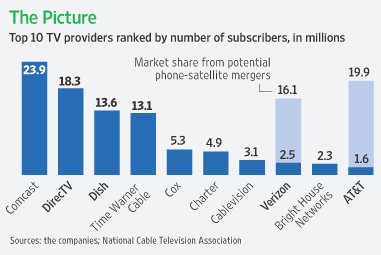The broadband stimulus package advocated by the Obama Administration may become a feeding frenzy for waste, fraud, and abuse. That’s the attitude of several public interest groups concerned about how public tax dollars are being used to study, map, construct, and deploy broadband networks to reach the underserved, and those without any broadband service at all.
Now the story has drawn the attention of the Associated Press’ technology reporter Peter Svensson, who along with Joelle Tessler, have written a piece exploring just where American taxpayer dollars are going on broadband mapping.
The $787 billion stimulus bill championed by the Obama administration set aside up to $350 million to create a national broadband map that could guide policies aimed at expanding high-speed Internet access. That $350 million tag struck some people in the telecommunications industry as excessive, compared with existing, smaller efforts. The map won’t even be done in time to help decide where to spend much of the $7.2 billion in stimulus money earmarked for broadband programs.
Svensson and Tessler talked to a variety of industry experts, as well as companies that often find themselves at a major disadvantage when trying to bid for mapping funds and discover the lowest bid for the best work isn’t always the determining factor.
The consensus is that the government is at risk for overspending up to 90% of the money set aside for mapping, and has vastly overestimated the actual costs:
Rory Altman, director at telecommunications consulting firm Altman Vilandrie & Co., which has helped clients map broadband availability in some areas, said $350 million was a “ridiculous” amount of money to spend on a national broadband map.
Even $100 million might be high. The firm could create a national broadband map for $3.5 million, and “would gladly do it for $35 million,” Altman said.
More concerning is the fact that some of the interests that have successfully won mapping contracts are infested with self-interested telecommunications company executives who have a vested interest in steering the findings of the mapping projects, as well as defending common industry practices of withholding data for “customer privacy” and “competitive” reasons. Allowing the telecommunications industry to provide the raw data (considerably redacted), a practice defended by telecommunications executives sitting on the boards of some mapping firms winning bids, is a recipe for the production of industry-favorable maps.
Public Knowledge, a public interest group, has been particularly critical of broadband mapping strategies, essential to measuring the current availability and very definition of what is broadband service in the United States. Art Brodsky, communications director of the group, has reported extensively on the issue for months.
Art Brodsky, for Public Knowledge:
It would be a shame if the stimulus mapping/grant program and the broadband plan were considered in isolation, because they are, together, pieces of the same puzzle. Certainly the telephone and cable industries are considering them together, and using the leverage on one to influence the other to reach the inevitable conclusion that no new broadband policies are needed and that everything will be just fine if we leave the companies in control. Ignore our slumping world rankings for broadband. Ignore the lack of choice. Let’s try to connect the dots into a long silver thread.
The first dot is broadband mapping. If the maps show there is no problem with broadband coverage, then there should be no need for legislation, regulation or any other policies that would immediately be branded a “solution in search of a problem” by the telecom industries. Connected Nation plays a key role here, because their maps will be constructed in at least a dozen states, perhaps more, under the broadband stimulus plan.
Unfortunately, the way the stimulus mapping program is going, that piece is falling nicely into place. By agreeing to the telephone and cable industry’s request – some might say caving into the industry’s demand – that broadband speeds not be reported, the National Telecommunications and Information Administration (NTIA) opened the door for all kinds of mischief. In public comments, NTIA officials said such an agreement was necessary to gain the cooperation of the telephone and cable companies. That’s one way to look at it. Another way is that by requiring the carriers to report broadband speeds – even if their reports were inaccurate – at least there would be something on the record that could be corrected, criticized or cited. Without speed data, the value of the program diminishes. Even under the old rules, all the carriers had to show was “advertised” speeds, so the carriers started advertising. The speeds agreed to by NTIA as “broadband” in the first place are relatively slow anyway.
Mark Seifert, oversees the broadband grant and mapping programs at the NTIA defends the spending proposals by the federal government. Seifert told the AP that since much of the data will come from the providers’ themselves, NTIA plans to “independently verify” the veracity of the data it receives, which he claims could include door-to-door verification with individual residents and other unspecified verification procedures.
Meanwhile, critics of some of the industry-connected broadband mapping efforts say the groundwork may be laid for future challenges by the nation’s largest broadband providers (large telephone and cable companies) who almost uniformly avoided participating in the first round of stimulus grant applications.
Michael Tattersall, founder of the mapping company Stratsoft is concerned. He told Public Knowledge incomplete or false map data could be used by providers to have other groups’ stimulus applications thrown out.
If the maps show there is more coverage in rural areas than there actually is, then Tattersall said, the “smaller, in-state broadband providers that are applying for funds that will be directly affected by the quality and integrity of state-commissioned broadband maps.” There could be challenges by the larger carriers, which didn’t apply for stimulus funds, to broadband grants from smaller rural, municipal or neighborhood based on already existing Connected Nation maps.
Disqualified applications based on discredited map data could throw the entire stimulus program into doubt, allowing telecommunications lobbyists for the big providers to argue the stimulus program is a failure and needs to be started over, with recommendations those large providers get the bulk of the money.
Indeed, several providers are already concerned with the prospect that stimulus funds could be used to bring competition to their areas — start-ups and projects funded by government money that could eventually directly compete against their existing offerings, designated as too slow or backwards for 21st century broadband.
With providers already trying to downplay expectations for what defines fast, robust broadband, it leaves incumbent providers keeping their communities in a perpetual slow lane in a much better position not to stick out like a sore thumb. Brodsky again:
In addition to using the maps, telecom carriers are also trying to freeze the idea of advancing broadband into what exists today.
AT&T led the charge on this, in a remarkable filing that would, in essence, freeze broadband where it is now because that’s what the stimulus law directs the FCC to do when it formulates a broadband plan. AT&T said, “In other words, the definition of broadband must comprise services that can practicably be deployed in unserved and underserved areas—and must comprise services that today’s unserved Americans can and will actually adopt.”


 Subscribe
Subscribe






